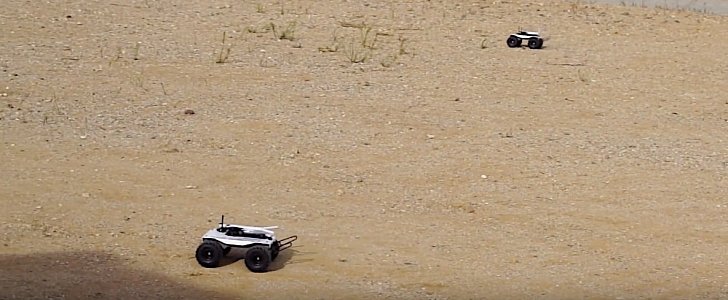Fighting in an urban environment is perhaps the most challenging type of warfare. Ever since World War 2 began, it became obvious massive and technologically advanced armies can lose advantage and momentum once they’ve entered cities. But what if there was a way around that?
For a while, America’s premier source of military innovations, DARPA, has been working on ways of integrating autonomous robots with military units and give them the ultimate advantage in an urban battlefield.
The program is called OFFensive Swarm-Enabled Tactics (OFFSET) and it involves autonomous air and ground robots locating, isolating and securing a target in an urban environment before the troops move in for the kill.
We’ve already seen a video of how the OFFSET program is supposed to work thanks to a video DARPA released back in August. Now, the agency says it is ready to take things to the next level.
DARPA announced this week it is now looking for proposals on operational swarm tactics and also for technologies that could be integrated into a future physical swarm system testbed. That means sensors, fielding technologies, communications, modular platforms, and mechanisms for swarm manipulation.
"We’re looking for imaginative proposals for component technologies that, when brought together with our OFFSET physical testbeds, can lead to technological breakthroughs for future swarm capabilities,” said in a statement Timothy Chung, program manager in DARPA’s Tactical Technology Office (TTO).
“The ability to enhance commercial-off-the-shelf (COTS) air and ground platforms can lead to new modes of swarm operations and disruptive swarm tactics for warfighters.”
All the new hardware and software brought into the program should allow for up to 250 air and ground robots to work in sync. Their first test mission will be seizing key urban terrain within eight square city blocks over a mission duration of four-to-six hours.
DARPA didn’t say when a fully operational swarm could be ready. More on its plans for its swarms can be found in the video attached below.
The program is called OFFensive Swarm-Enabled Tactics (OFFSET) and it involves autonomous air and ground robots locating, isolating and securing a target in an urban environment before the troops move in for the kill.
We’ve already seen a video of how the OFFSET program is supposed to work thanks to a video DARPA released back in August. Now, the agency says it is ready to take things to the next level.
DARPA announced this week it is now looking for proposals on operational swarm tactics and also for technologies that could be integrated into a future physical swarm system testbed. That means sensors, fielding technologies, communications, modular platforms, and mechanisms for swarm manipulation.
"We’re looking for imaginative proposals for component technologies that, when brought together with our OFFSET physical testbeds, can lead to technological breakthroughs for future swarm capabilities,” said in a statement Timothy Chung, program manager in DARPA’s Tactical Technology Office (TTO).
“The ability to enhance commercial-off-the-shelf (COTS) air and ground platforms can lead to new modes of swarm operations and disruptive swarm tactics for warfighters.”
All the new hardware and software brought into the program should allow for up to 250 air and ground robots to work in sync. Their first test mission will be seizing key urban terrain within eight square city blocks over a mission duration of four-to-six hours.
DARPA didn’t say when a fully operational swarm could be ready. More on its plans for its swarms can be found in the video attached below.


